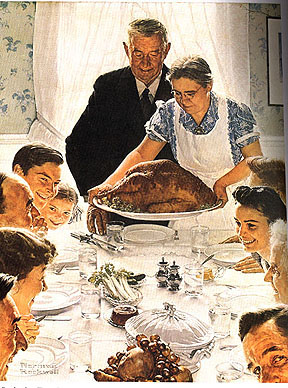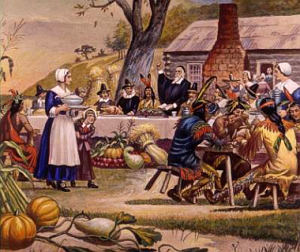For most Americans the traditional Thanksgiving dinner includes things like turkey, stuffing, mashed potatoes, green bean casserole, sweet potatoes with a marshmallow topping, cranberry sauce and, of course, pumpkin pie.

But what if we attempted to recreate the first autumnal feast celebrated by the Pilgrims and the Wampanoag Native Americans who gathered at the Plimouth Plantation in 1621? Food historians have speculated what would have been served at that meal and are in agreement that the groaning board would look quite a bit different than ours today.

No doubt turkey would be a headliner at the meal, but so would other wild fowl like duck, goose, swan and passenger pigeon. And rather then roasting them with a bread based stuffing, it would have more likely been a herb, onion and nut combination. Pilgrim Edward Winslow documented in his diary that the Wampanoag warriors contributed 5 deer which were probably roasted on a spit and eventually used in part for a rich venison stew.
And being near the water's edge, fish and shellfish were also served at the meal. Mussels, lobster, clams and oysters were in abundant supply, as were bass and eels which could have been preserved by drying and smoking.
Local vegetables such as onions, beans, lettuce, spinach, carrots and peas were also prepared, along with indigenous fruits like blueberries, plums, grapes, gooseberries, raspberries and of course, cranberries, but not as the sauce we are familiar with. Chestnuts were also roasted and used as stuffing.

But what wasn't there is just as interesting. Apples are not native to North America and had not yet been introduced. Neither were there any potatoes, white or sweet, mashed or roasted. More likely turnips were used. And while there was corn, it was not the sweet corn that we eat on the cob, but instead was ground into a coarse meal that was boiled down and cooked into a thick mush or porridge and sweetened with molasses.
One other significant difference? That first feast lasted 3 days!
No comments:
Post a Comment